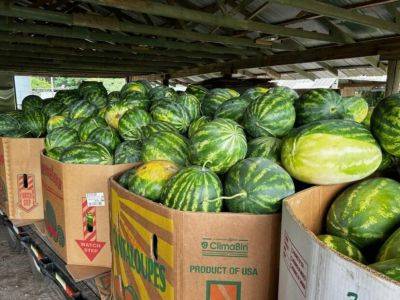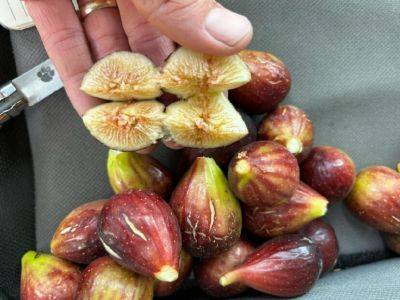Zack Snipes
SC Fruit and Vegetable Field Report – September 12, 2022
24.07.2023 - 12:00 / hgic.clemson.edu
Rob Last reports, “Fall watermelons are looking good. There is some disease around, so fungicide applications remain crucial. I am finding whiteflies in a few crops too. As we move into Fall, with increasing numbers of misty mornings, scouting for diseases is going to be very important. Mists will increase periods of leaf wetness exacerbating disease pressures in crops. Scouting enables us to make timely applications. Thoughts are turning to planting Fall crops, and I urge everyone to check transplants carefully to minimize the risk of bringing infected plants into the fields, storing problems for the rest of the crop cycle.”
Zack Snipes reports, “Another wet week for us here in the Lowcountry. Some fields are drying out enough to get in and spray. A few growers have been lucky enough to miss some of the rains and have gotten in the fields to plant fall greens. Muscadines are really coming in right now. It seems that they are all coming in at the same time, which is not good news for U-pick and roadside stands. I am seeing a lot of ripe rot in the berries, particularly purple grapes. I am seeing it in scuppernongs but not as widespread as the muscadines. Symptoms of this disease will be circular, sunken in lesions on the fruit. If allowed to incubate or under ideal conditions, salmon-colored spores will appear in the center of the fruit. This is the same disease we call anthracnose in strawberries, tomatoes, and watermelons. Our wet August has significantly contributed to this disease. At this point in the season, there isn’t much that can be done. Removing dropped berries and leaf litter will help with management for next season.”
Phillip Carnley reports, “Here in Orangeburg and Calhoun, it’s another cloudy and humid
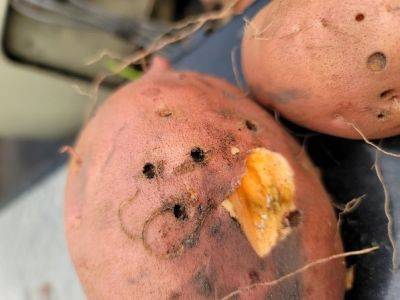
SC Fruit and Vegetable Field Report September 20, 2021
Rob Last reports, “Fall cucurbit crops, including cantaloupes and watermelons, are ripening and approaching harvest. Disease pressure from powdery mildew and gummy stem blight has really increased significantly over the last week. Maintaining a tight spray program will be key to managing diseases. As we look forward to strawberry planting, the land is being prepared. If you plan to fumigate, ensure the plant back interval between fumigation application and planting is maintained. A good test can be to plant some lettuce seed in the treated area. When lettuce germinates, the risk of damage from fumigation is reduced. Finally, on any remaining fall plantings, consider using a labeled pre-emergent herbicide to help with weed management. Once the crop and weeds emerge, options are drastically reduced.
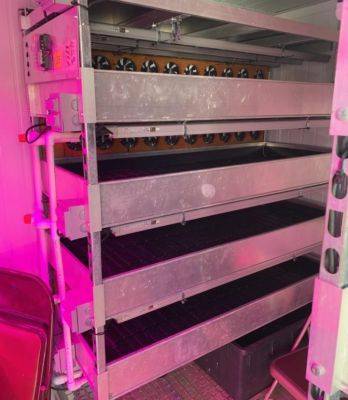
SC Fruit and Vegetable Field Report September 27, 2021
Zack Snipes reports, “We have had plenty of rain as of late in the Lowcountry. Many growers could not get in the fields due to fields being soggy. We have some beautiful weather coming this week, so I expect a good bit of ground to be prepped and planted. We have plenty of moisture in the soil, so those preemergent herbicides should have great efficacy if put down properly. I am seeing some odd yellowing symptoms of watermelon vines that lead to a collapse in the plant. We sent off samples to the Plant Diagnostic Lab. If you are suspicious of a plant disease, we can identify the disease for you. I also received a few calls this week about greenhouses. Before buying a greenhouse, consider retrofitting a shipping container. Thousands of transplants can be grown in a very small space which saves you money on your heating and cooling bill.”

SC Fruit and Vegetable Field Report – September 13, 2021
Zack Snipes reports, “We had a heavy downpour of rain last week, surpassing 2.5 inches in some spots. I am seeing downy mildew in cucumbers and lots of gummy stem blight in winter squash and pumpkins. The worm pressure has lessened in the past few weeks. I am seeing lots and lots of black rot in transplanted brassicas. Inspect your plants before planting them to make sure the disease is not coming from the nursery. Once a brassica is planted in the field, there is not much we can do to slow the spread except hope that environmental conditions (rain, humidity) are not conducive to spread the disease. I am also seeing lots of early weed pressure in fall planted crops on both bare-ground and plastic. We have some very good herbicide options to apply preplant. However, once you plant the crop, we have very few herbicides that can be used over the top of the crop. Right now is the time to get down strawberry herbicides before the season starts. As the old proverb goes: an ounce of prevention is worth a pound of cure.”

SC Fruit and Vegetable Field Report January 18, 2022
Rob Last reports, “In our area, crops are developing well with few pest or disease issues currently. Some brassicas are displaying a reddening to the older leaves associated with reduced phosphorous uptake. Phosphorous uptake can be reduced in cold temperatures but will recover when we see some warmer temperatures. There is no response to an additional application. Where strawberries are flowering or have fruit, it is advisable to remove those to minimize sources of Botrytis gray mold for later in the year.”
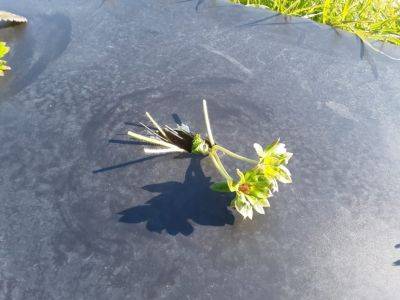
SC Fruit and Vegetable Field Report – January 31, 2022
Rob Last reports, “Pest and disease issues in the area remain very low; however, as temperatures rise, we expect activity to increase. Although it is quiet, it is still essential to continue to scout. Assessment of crops indicates that we have escaped the worst of any chill injury or loss of plants. Pruning of fruit crops continues while dormancy holds and labor begins to return to the area.”
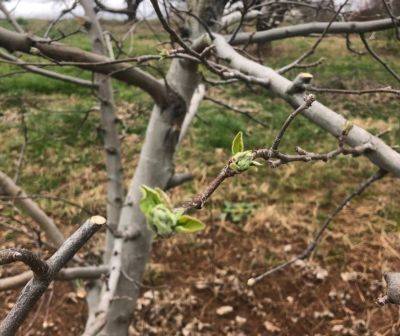
SC Fruit and Vegetable Field Report- March 14, 2022
Dr. Matt Cutulle reports, “I saw my first nutsedge plants this year pop up in the plastic mulch of a fellow researcher’s trial last week in Charleston. Soil temperatures in plastic mulch systems are going to be higher, which may lead to earlier sprouting of yellow nutsedge tubers. New tubers begin forming four to six weeks after a new shoot emerges. Individual nutsedge plants may eventually form patches 10 feet or more in diameter, thus it is important to practice field sanitation once an infestation is recognized.”
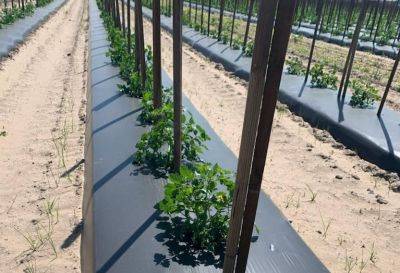
SC Fruit and Vegetable Field Report – April 18, 2022
Zack Snipes reports, “It has been a very windy spring. The winds are drying out our soils and beating up plants. I have looked at some tomatoes, and the ones that aren’t tied are wind-whipped, and the ones that are tied have callus tissue forming where the string is touching them. We have some beautiful lettuce and greens coming in right now, along with spring onions. I have also seen some squash coming in on farms that grew squash in high tunnels. Strawberry plants are still small and have very few blooms for this time of year. We are harvesting highbush blueberries in high volumes right now. I think we escaped more cold damage than previously expected.”
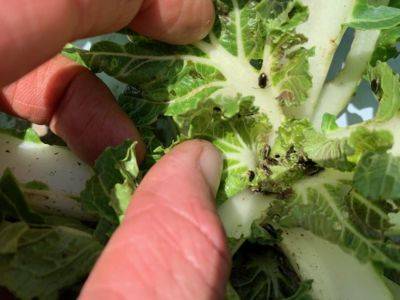
SC Fruit and Vegetable Field Report – May 31, 2022
Zack Snipes reports, “It seems like everything is coming in from the fields right now. We got some rain but could really use some more. I am seeing lots of aphids on a variety of crops (melons, cukes, eggplant). I am also seeing ladybird beetles and parasitized aphids in these fields, which means our predators are out there working for us. Bacterial wilt and Southern blight are starting to appear on tomatoes as well. Knowing the difference and preparing for next season’s crop is critical. It is getting hot and is still windy, so growers might consider adding one or more irrigation cycles to their fields. Remember that in our sandy soils, any irrigation event over an hour is just wasting water. More frequent 30-45 minute cycles are more efficient.”
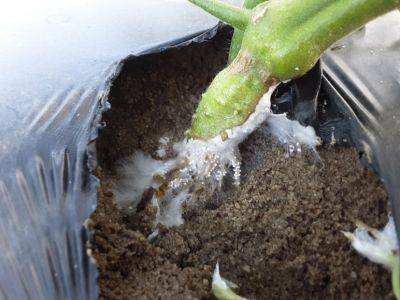
SC Fruit and Vegetable Field Report – June 6, 2022
Rob Last reports, “Insect and disease activity is increasing in the area, across a broad range of crops. In cucurbits, we are seeing powdery mildew and gummy stem blight in watermelon. Remember to keep spray intervals tight. Loopers are also being found in the area, and applications to manage rind worms will be beneficial as we rapidly approach harvest. Fusarium wilt of watermelons is showing up in many fields. At this stage, there is no effective treatment; however, soil temperatures are likely to reduce the incidence of new infections. Tomatoes and peppers are developing well with Southern blight and bacterial wilt in evidence. Spider mites are very active right now. Blackberries are just coming to harvest with good flavor and quality. Remember to scout your crops regularly to ensure timely applications can be made.”
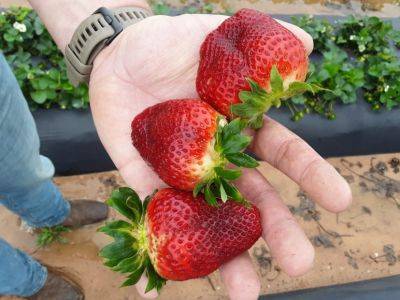
SC Fruit and Vegetable Field Report March 28, 2022
Rob Last reports, “The first of this season’s strawberries are coming to market with good quality. Growers still need to be very mindful of spider mites. Populations are around in the area but are variable. As we get into harvest season, gray mold management will be critical, so sanitation and appropriate fungicide applications will be needed. Otherwise, preparations for watermelon planting and some early cantaloupes have been sown. Damage assessments on later variety peaches will continue.”
